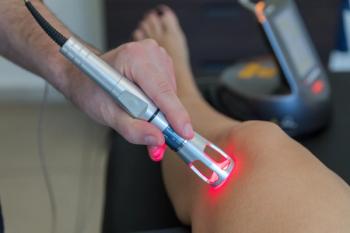
Emerging therapies for bug bites
It’s summer, so you’re likely seeing more patients with skin conditions caused by bug bites or infestations. Treating them has gotten harder, but emerging therapies could help.
It’s summer, so you’re likely seeing more patients with skin conditions caused by bug bites or infestations. Treating them has gotten harder, but emerging therapies could help.
According to Raegan Hunt, M.D., Ph.D., chief of pediatric dermatology at Texas Children’s Hospital, knowing how to treat these conditions in children can help you combat a prevalent problem.
She discussed treatment at the American Academy of Dermatology 2018 Summer Meeting in Chicago.
Head lice: According to Centers for Disease Control & Prevention (CDC), almost all cases are 100 percent resistant to over-the-counter therapies.
Emerging therapy: A new treatment shows promise, Hunt says. A 0.74% abametapir lotion inhibits the function of the zinc- and calcium-containing enzymes critical to louse survival. Apply to dry hair, and leave it for 10 minutes before rinsing. Removing nits (lice eggs) or repeating treatment isn’t necessary, she says.
Malathion: A 0.5% lotion kills lice and is partially effective in killing nits. A single treatment, applied to dry hair, and nit removal is effective for most patients. Leave it for 8-12 hours before rinsing. Scalp irritation is possible, she says, and exercise caution because malathion is flammable.
Spinosad: This neurotoxic 0.9% topical suspension kills lice and nits. Apply it to dry hair, and leave for 10 minutes before rinsing. Nit removal isn’t necessary, but re-treat if lice reappear in a week.
Ivermectin: This neurotoxic 0.5% lotion kills newly-hatched lice, but not nits. Apply it to dry hair, and leave it for 10 minutes before rinsing. Nit removal is optional, and a single treatment is typically effective, she says.
Benzyl alcohol: A 5% lotion kills lice by asphyxiation, but not nits. Apply to dry hair, leave for 10 minutes before rinsing, and remove nits. Repeat after nine days.
Bug and Insect Bites: These bites can be itchy and appear mostly on exposed skin. In these cases, Hunt says, recommend insect repellents for prevention.
DEET: It protects against ticks, mosquitos, biting flies, and biting midges. The CDC recommends a 20%-30% concentration for children.
Picardin: A 20% solution equals 20% DEET. It repels the same insects, but can irritate the skin.
IR3535: This spray repels mosquitos, deer ticks, body lice, and biting flies. Use a 7.5% or higher concentration solution. Use may cause eye irritation, she says, and may damage or dissolve plastics.
Protective clothing: Clothing treated with .5% permethrin repels ticks, chiggers, mites, and mosquitos. Home-treated clothes are effective for approximately six washes; pre-treated clothing lasts up to 70 washes.
Alert patients to avoid some repellent methods, she says. Don’t use combination sunscreen and repellent. Apply them separately, using sunscreen first. Additionally, these tactics don’t work: chemical repellant-soaked wristbands, tea tree oil, garlic or vitamin B1 oral supplements, and ultrasonic insect repellent devices.
REFERENCE:
Raegan Hunt, M.D., Ph.D. “Bug Bites and Infestations: Approaching the Arthropod Attack,” American Academy of Dermatology 2018 Summer Meeting, Chicago, Ill., July 27, 2-4p.m.
Newsletter
Like what you’re reading? Subscribe to Dermatology Times for weekly updates on therapies, innovations, and real-world practice tips.

















